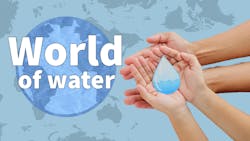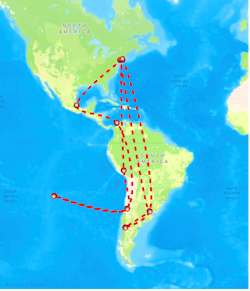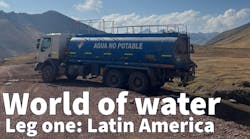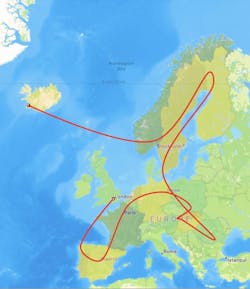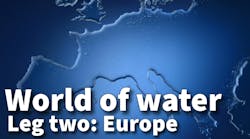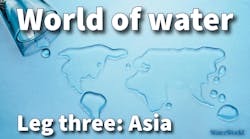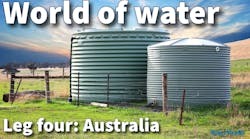Welcome to the world of water. Join contributor Kaitlin Spiridellis as she travels across six continents to gain a better understanding of the disparities in how people experience drinking water.
Here, you can expect conversations with researchers, non governmental organizations (NGOs), development firms and municipalities about water resources in specific regions across the globe.
Spiridellis is traveling through Vanderbilt University's Michael B. Keegan Traveling Fellowship. During her time at Vanderbilt, she worked for three years in Vanderbilt's Drinking Water Justice Lab. Spiridellis has studied the impact of drinking water contaminants on human body organ systems.
Join her as she travels, writes and shares her experiences from around the world.
Drinking water around the world
Key water disparities in Latin America
Starting in Mexico City this past August, I traversed Latin America, visiting communities in Colombia, Chile, Rapa Nui/Easter Island, Perú, Argentina, and Uruguay.
I spent anywhere from a few days to a few weeks in each location, conversing with knowledgeable individuals to better understand the role of drinking water in different environmental systems.
While it would be impossible to generalize the realities in each community to a city, region, or country, three main disparities persist: scarcity versus abundance, industrial versus human uses, and urban versus rural settings.
Approaching drinking water from all angles in Europe
My focus shifted to Europe, where many global water organizations are headquartered–from UN Water in Geneva to the World Water Council in Marseille–and I was excited to connect with changemakers, advocates, and innovators across the 12 countries that I visited.
I arrived in late November in the United Kingdom, and made my way to Spain, Belgium, Germany, Poland, Austria, Slovakia, Romania, Denmark, Finland, Norway and Iceland.
All but one of the top 20 of Yale’s Environmental Performance Index for “Sanitation and Drinking Water” are in Europe, nine of which I visited. Japan is the only non-European country ranked. Baseline quality and widespread access to drinking water enabled other trends to emerge in my conversations, including the role of consumer preferences, land use dynamics, and sustainable innovation.
Cross-stakeholder collaboration in the Asian water sector
My third travel leg on my global exploration of water disparities took me to a new continent – Asia.
Starting in Thailand, followed by Vietnam, Cambodia, Singapore, Indonesia, South Korea and Japan, my travels exposed me to completely new cultures, traditions, and concepts within the water field. I found that across the Asian continent, diverse water realities reflect distinct histories — from government ideologies and colonial legacies to disparities in sanitation infrastructure and research investment. In conversations with water experts across various organizations, it became evident that distinct histories lend themselves to distinct solutions.
No option is off the table in Australia
Across Latin America, Europe and Asia, most of my research has focused on the disparities of access to and quality of drinking water that exist between nations. However, my visit to Australia demonstrated that decentralization of governance and regulation within a nation can also create vastly different internal realities.
In visiting Sydney and Melbourne, notably only two major cities in an incredibly complex geography and only one part of the vast Oceania region, three key themes emerged:
- The nation's most isolated and rural communities, particularly First Nations groups, are struggling with a gap in utilities meeting their most basic needs.
- Current global climate models are not well-adapted to the non-stationarity posed by climate change, struggling in their role of accurately identifying and forecasting weather events and trends.
- Many Australian municipalities are investing heavily in rainfall-independent sources, such as desalination and water reuse, as precipitation becomes more extreme and less predictable.
About the Author

Kaitlin Spiridellis
Kaitlin Spiridellis graduated summa cum laude from Vanderbilt University in May 2024, where she studied organizational studies, Spanish, and sustainability. During her time at school, she worked for three years in Vanderbilt’s Drinking Water Justice Lab, where she studied the impact of drinking water contaminants on human body organ systems within community water systems in the United States. She was awarded the Michael B. Keegan Traveling Fellowship in 2024 with a proposal to expand the efforts of the Drinking Water Justice lab globally. Currently, she is traveling across six continents conducting semi-structured conversations and site visits with researchers, NGOs, development firms and municipalities to gain a better understanding of the disparities in how people experience drinking water. She is writing about her experiences on her Substack @spiroadventures and in a column for WaterWorld.
